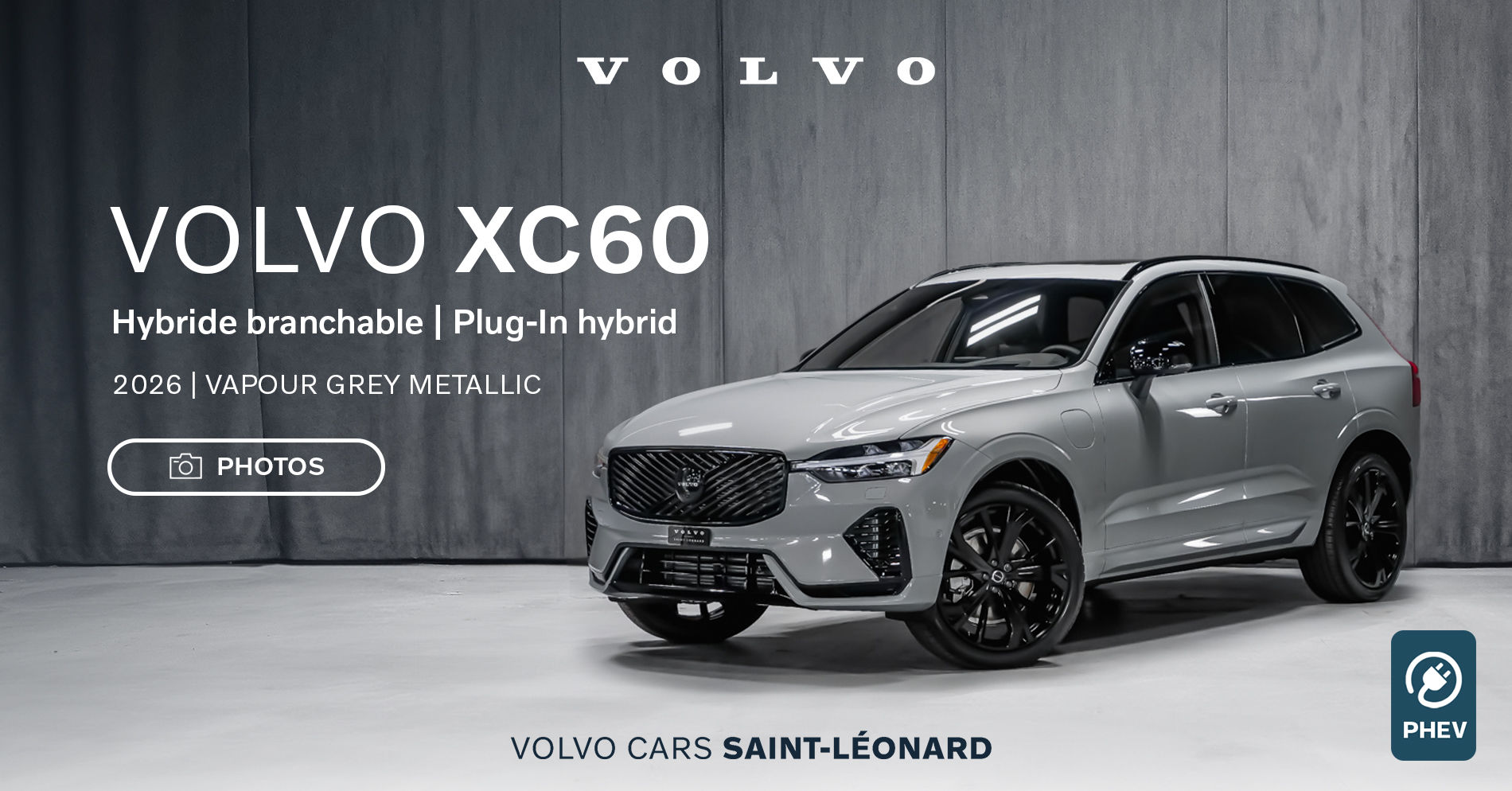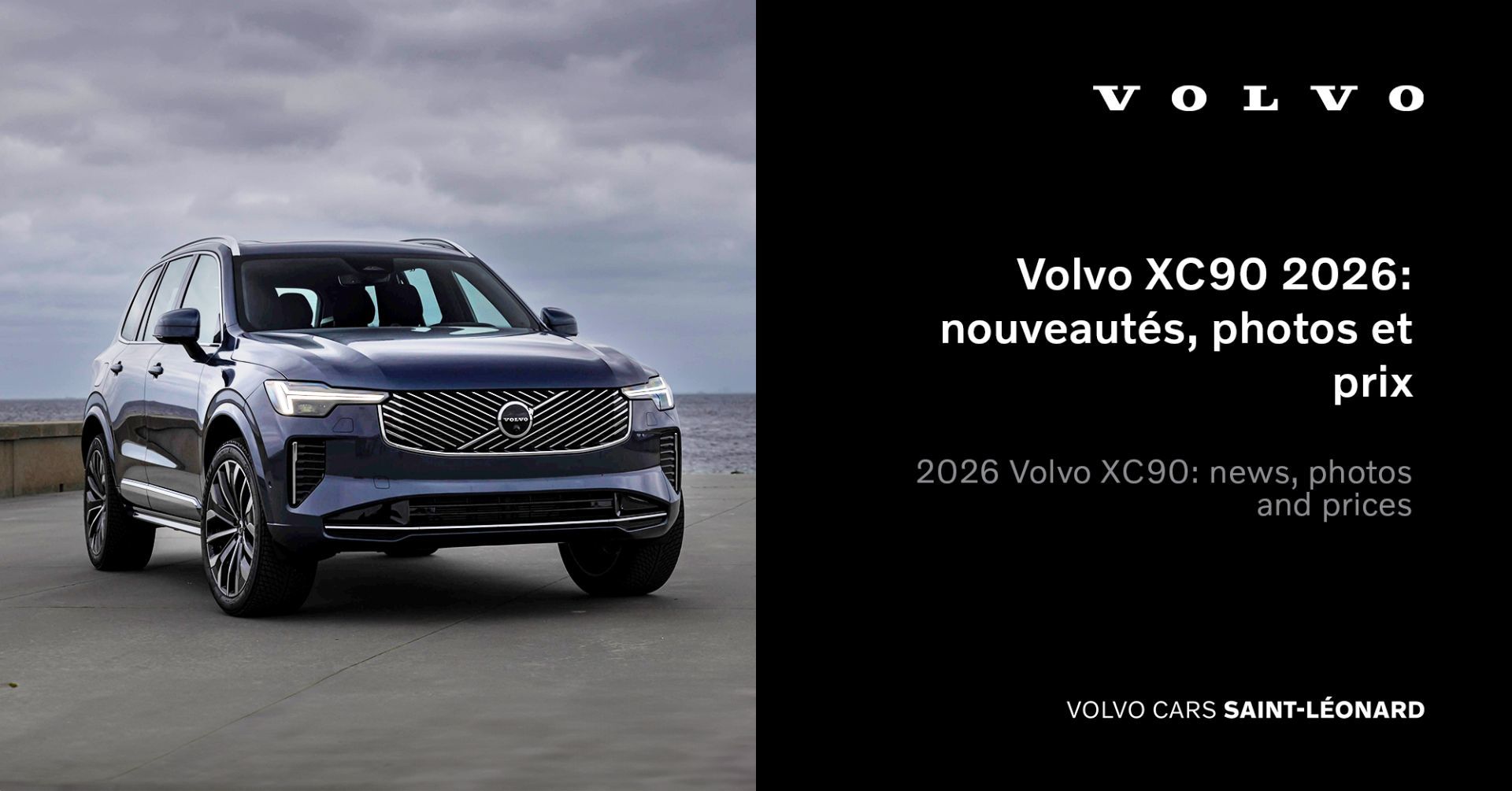
The new 2026 Volvo XC60 Plug-In Hybrid (Black Edition) - VAPOUR GREY - Pictures
Check out the real images of one of our first new 2026 refreshed Volvo XC60 Plug-In Hybrid in VAPOUR GREY METALLIC color and in ULTRA BLACK EDITION...
Read moreVolvo Cars Saint-Léonard
Volvo Cars Saint-Léonard
4315 Boulevard Métropolitain Est, Montreal, QC, H1R 1Z4
Did you know that women are 47% more likely to be injured at the wheel of a vehicle and 17% more likely to die in a similar accident?
Although women are less often involved in accidents, they nevertheless account for a higher proportion of road accident victims. The cause: vehicles that are not adapted to the female body type.
In this article, we write about the shortcomings of crash testing since its inception and how a brand like Volvo has added more inclusions for women's safety in accidents.
The history of crash testing in Canada has followed a parallel evolution to that in the United States, while adopting its own safety standards.
Before the 1960s, crash tests were rare and conducted mainly by the manufacturers themselves. However, safety revolutions were already appearing, such as Volvo's three-point seatbelt, which was later incorporated into crash tests.
However, as the number of vehicles on Canadian roads increased and awareness of the dangers of accidents grew, the federal government introduced stricter regulations.

In 1971, Transport Canada introduced the Motor Vehicle Safety Regulations (MVSR), imposing standards for seatbelts, bumpers, frontal impact resistance and even the strength of seat anchorages during collisions.
But the real breakthrough came in 1972 with the development of the so-called "dutch man" dummy, which simulates the human body during crash tests. The aim: to collect more precise data on the effects of an impact on humans.
Over the years, the use of the "dutch man" has been democratised for all car brands to the point where it is becoming ever more sophisticated. At this point, the consequences of an accident on the body no longer hold any secrets.
Well, maybe for men of 1.70 metres and 76 kilos....
In her book "Invisible Women, Exposing Data Bias in a World Designed for Men", British journalist Caroline Criado-Perez demonstrates that certain object designs penalise women more than men.
In the automotive industry, this flaw is found in crash tests, which do not take sufficient account of a woman's morphology. However, if we look at the development of crash tests, we can see an increasing adoption of crash tests involving female dummies and children to better reflect the diversity of passengers.

But there are still some shortcomings. Firstly, the dummy is usually only used on the passenger seat, which means that it is impossible to know how a female driver would be affected. Secondly, women are often not positioned in the same way because they are smaller on average.
"It's just a reduced male model. [...] But women are not reduced men. We have a different distribution of muscle mass [...] We have lower bone density. There are differences in vertebral spacing. Even our bodies are different. And these differences are all crucial when it comes to injury rates in road accidents."
As a result, and despite advances in human safety, women are 47% more likely to be seriously injured, 71% more likely to be slightly injured and 17% more likely to die than men in the same accident.
But at Volvo, we had been taking action long before this book was published, with the work of a Swedish researcher, Astrid Linder.
Astrid Linder, an engineer at the Swedish Transport Safety Research Institute, is aware that women run a higher risk of neck injuries (such as whiplash) than men. So she has developed a 100% female dummy, code-named SET 50F.
The mannequin is 1.62 m tall and weighs 62 kg, with narrower shoulders and wider hips than a man. The main objective: to determine why women are more at risk than men in the event of a road accident.

Although current legislation only requires male-format dummies, Volvo is now including women in its crash tests in order to provide an inclusive approach to safety, with the aim of achieving its "zero fatalities" target behind the wheel of a Volvo.
At Volvo Cars Saint-Léonard we stock a wide selection of vehicles with the safety features for which Volvo is renowned.

The new 2026 Volvo XC60 Plug-In Hybrid (Black Edition) - VAPOUR GREY - Pictures
Check out the real images of one of our first new 2026 refreshed Volvo XC60 Plug-In Hybrid in VAPOUR GREY METALLIC color and in ULTRA BLACK EDITION...
Read more
2026 Volvo V60 & V90 Cross Country: the end of an era at Volvo?
Since 1997, the Cross Country range has been an integral part of Volvo's history. First with the Volvo V70 XC, then the Volvo XC70 under the Ford...
Read more
2026 Volvo XC90: news, photos and prices
At the end of 2024, we proudly announced the new Volvo XC90 2025.5 with a new exterior design and new technologies, closer to the Volvo EX90. For...
Read more